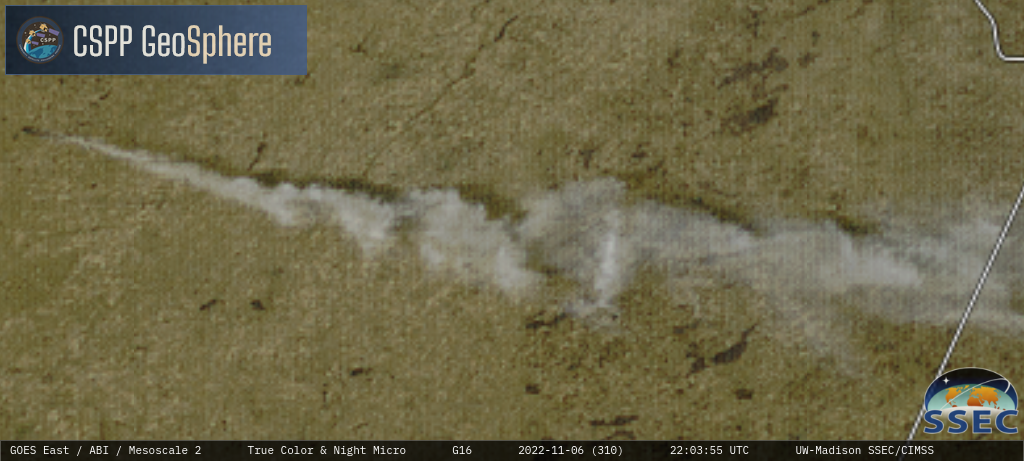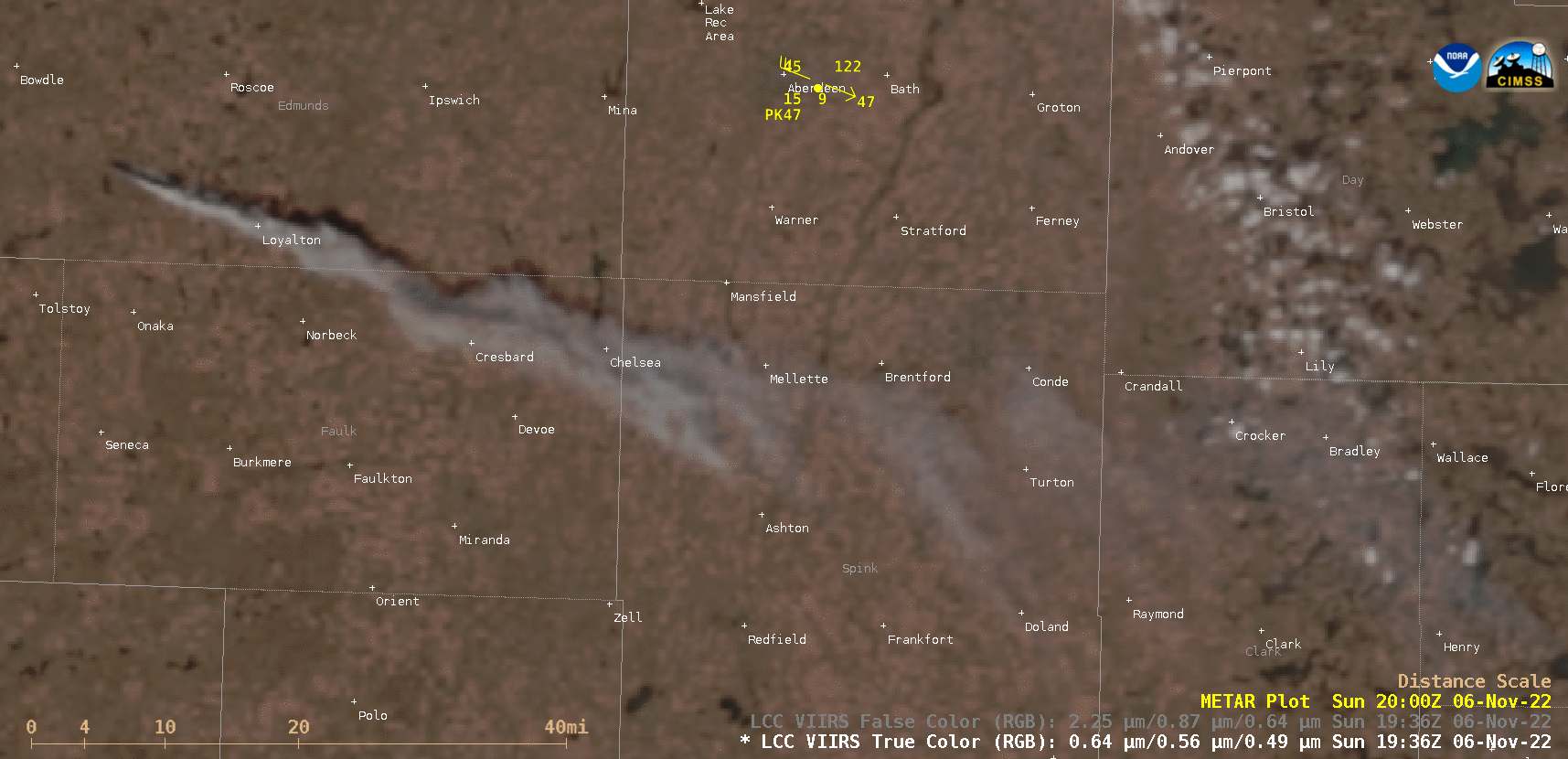Grassland fire in South Dakota

GOES-16 Fire Temperature RGB (top left), Shortwave Infrared (3.9 µm, top right), Fire Power (bottom left) and Fire Temperature (bottom right) images [click to play animated GIF | MP4]
GOES-16 True Color RGB images from the CSPP GeoSphere site (below) displayed the smoke plume as it drifted southeastward and eventually crossed the South Dakota / Minnesota border — and a dark burn scar became apparent at the fire source region.
NOAA-20 VIIRS True Color and False Color RGB images valid at 1944 UTC (below) provided a higher spatial resolution view of the smoke plume; on the False Color RGB image, pink pixels highlighted the hottest portions of the wind-driven fire at that time. The VIIRS data used to create these images were acquired and processed by the SSEC/CIMSS Direct Broadcast ground station.===== 07 November Update =====

NOAA-20 VIIRS Day/Night Band (0.7 µm) and Shortwave Infrared (3.74 µm) images valid at 0759 UTC, along with the GOES-16 Shortwave Infrared (3.9 µm) image at 0756 UTC [click to enlarge]
This small fire was not evident in a later Suomi-NPP VIIRS Day/Night Band image valid at 0852 UTC (below) — but the 7-8 mile long dark burn scar was easily seen between Bowdle and Loyalton.




